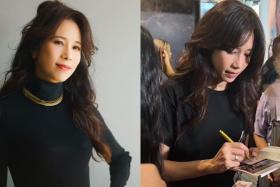Survival of the beautiful
Studies show attributes needed for survival and reproduction related to standards of attractiveness
Beauty may not simply be in the eye of the beholder.
That's what evolutionary psychology, backed by years of research, suggests.
From an evolutionary perspective, people have evolved to value certain physical features because they convey important information about one's age, health and genetic quality, psychologist Norman Li said.
The Singapore Management University associate professor told The New Paper: "This information is important because, at least in ancestral times, it impacted whether people could have viable offspring."
It seems that attributes necessary for survival and reproduction have seeped into modern standards of beauty.
A 2015 study published in Evolution and Human Behaviour shows the close fit between sex-differentiated morphology and standard of attractiveness.
Psychologists at the University of Texas (UT) found that men prefer women with a 45-degree lumbar curvature - the curve from back to buttocks.
This is an optimal angle that allows women to better support multiple pregnancies.
Body shape, determined by the waist-to-hip ratio (calculated by dividing your waist circumference by your hip circumference), matters too.
A 2004 UT study found that a range of 0.67 to 1.18 in females is attractive to men, while a 0.8 to 1.0 ratio in men is attractive to women.
People in the ideal hip-ratio range are less likely to suffer from chronic diseases like cancer and diabetes, studies have shown.
Waist-to-hip ratio in women is highly related to their fertility too, said Prof Li.
He added that facial symmetry is also an indication of good genes - essential for survival, a sign of good health, and a good choice for mating.
The human body develops by cells dividing neatly. If every division were to be perfect, the result would be a baby with complete facial symmetry.
Genetic mutations and environmental pressures mess up the symmetry.
These physical attributes (and therefore attractiveness) change as people age, which in part explains why people visit aesthetic clinics, said Prof Li.
Women - and increasingly more men - apply cosmetics and go for procedures to visually reverse the effects of ageing, he said.
Get The New Paper on your phone with the free TNP app. Download from the Apple App Store or Google Play Store now



